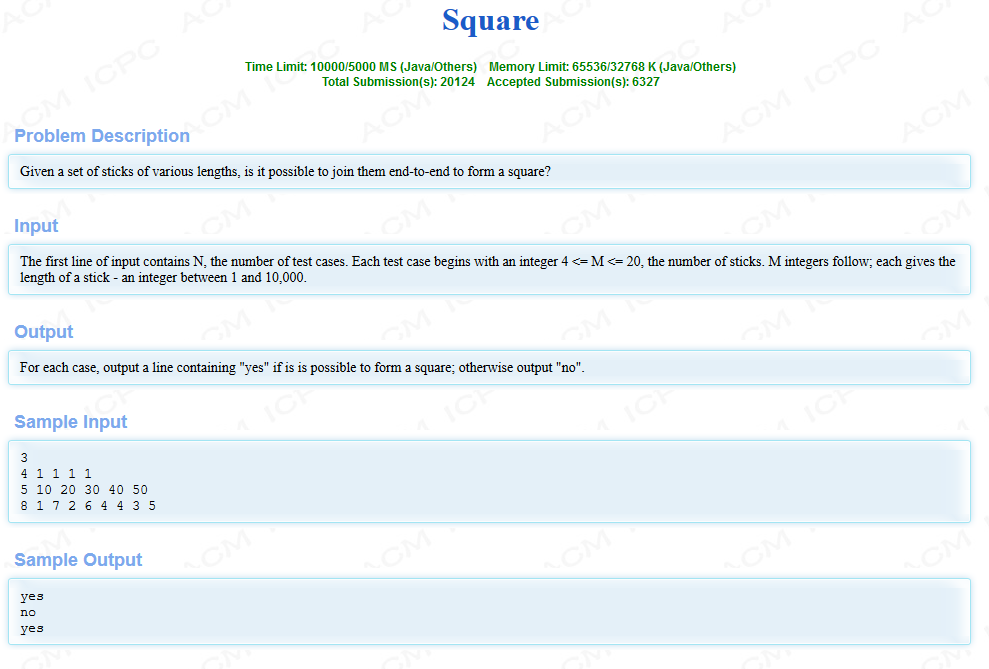HDU1518—-Square
题目
链接:HDU1518

分析
参考:https://blog.csdn.net/guodongxiaren/article/details/23126997
题意就是好多棍子,看能不能拼成正方形。主要注意的有几点:
- 所有棍子都要用到,不能剩余
- 输入已经保证大于4根棍子了。所以无需判断可能小于3根棍子的情况
- 棍长的总数首先要是4的倍数,才能进行。否则直接输出 “no”
- 当前面前提满足以后,再满足3 根棍子拼好,就完工了。最后一根一定能拼好。
解法就是运用dfs方法不断尝试,当一个结果不符合题意时,就回溯到上一个结果。
此外,我们还可以提前对数据进行排序,将数据从大到小排序,以提高查找速率。
1
2
3
4
5
6
7
8
9
10
11
12
13
14
15
16
17
18
19
20
21
22
23
24
25
26
27
28
29
30
31
32
33
34
35
36
37
38
39
40
41
42
43
44
45
46
47
48
49
50
51
52
53
54
55
56
57
58
59
60
61
62
63
64
65
66
67
68
69
70
71
72
73
74
75
|
#include <cstdio>
#include <cstring>
#include <algorithm>
using namespace std;
const int MAXN =1E5+10;
int arr[MAXN];
bool vis[MAXN];
int one, n, t;
bool cmp(int a, int b)
{
if(a > b)
return true;
return false;
}
bool dfs(int num, int pos, int res)
{
if(num == 3)
return true;
for(int i = pos; i < n; i++)
{
if(vis[i])
continue;
vis[i] = true;
if(arr[i] == res)
{
if(dfs(num+1, 0, one))
return true;
}
else if(arr[i] < res)
{
if(dfs(num, i+1, res-arr[i]))
return true;
}
vis[i] = false;
}
return false;
}
int main()
{
scanf("%d", &t);
while(t--)
{
scanf("%d", &n);
int cnt = 0;
for(int i = 0; i < n; i++)
{
scanf("%d", &arr[i]);
cnt += arr[i];
}
if(cnt % 4 != 0)
{
printf("no\n");
continue;
}
one = cnt / 4;
memset(vis, false, sizeof(vis));
sort(arr, arr+n, cmp);
if(dfs(0,0,one))
printf("yes\n");
else
printf("no\n");
}
return 0;
}
|






